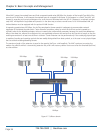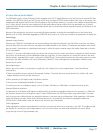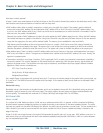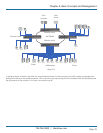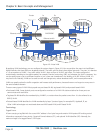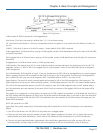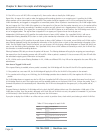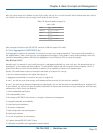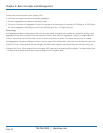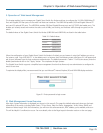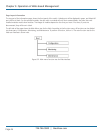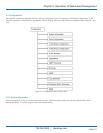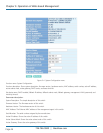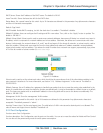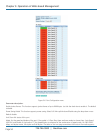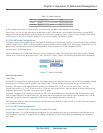
724-746-5500 | blackbox.com
Page 44
Chapter 4: Basic Concepts and Management
There are also some constraints when applying LACP:
1. LACP does not support inter-switch bandwidth aggregation.
2. The ports aggregated must operate in full-duplex mode.
3. The ports in the same Link Aggregation Group must operate at the same speed, for example, all 100 Mbps or all 1000 Mbps.
You cannot aggregate a 1000 Mbps port and two 100 Mbps ports for a 1.2 Gbps trunk port.
Terminology
Link Aggregation enables multiple physical links with the same media and speed to be bundled as a logical link forming a Link
Aggregation Group with a group ID. From the viewpoint of MAC clients, each Link Aggregation Group is an independent link.
Links in a network can be switch-to-switch, switch-to-station, and station-to-station. The station may be a host or a router.
Link Aggregation, sometimes called port trunking, uses two types of link configuration: static port trunk and dynamic port trunk.
• Static Port Trunk: When physical links are changed, the administrator needs to manually configure the switches one by one.
• Dynamic Port Trunk: When physical links are changed, LACP takes over and automatically reconfigure. The administrator does
not have to do anything and will see the trap message of LACP changed in NMS.



